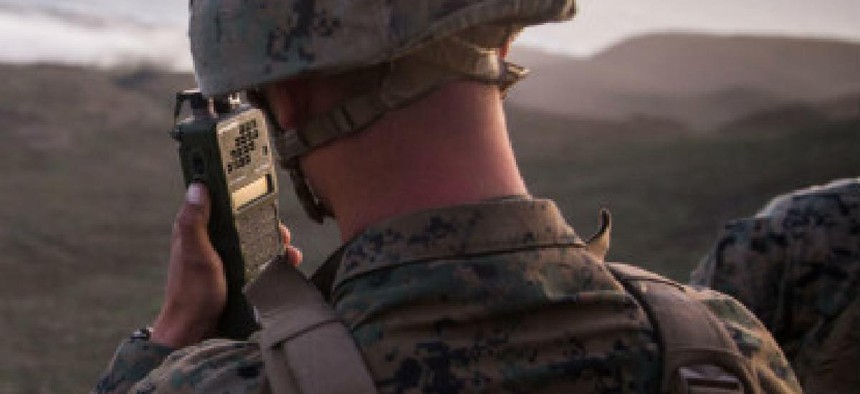Marines could see secure handhelds by 2019

A new program will provide rugged secure handheld smart devices to Marines.

The U.S. Marine Corp. Systems Command has rolled out a new program to get rugged, secure handheld smart communications devices into squad leaders' hands by 2019.
The Marine Air-Ground Task Force' Common Handheld program will identify commercial handheld devices suitable for Marine infantry in the field. The idea is to keep Marines connected even they're on foot and not within reach of secure mobile communications systems.
Under the program, software on the commercial devices would be customized to meet security standards. The devices would also have tactical applications pre-installed, eliminating the need for multiple devices that enable various capabilities.
The devices will take advantage of military and commercial security, according to program lead Maj. Kevin Shepherd.
"These devices will all have multiple layers of encryption, both on the phone and in transmission," he said. "If obtained by the wrong person, our devices should withstand any hacks long after the tactical information loses value."
The Marine Corps System Command said it began the program in response to "Marine feedback."
The armed forces, including the Marine Corps, have been looking for ways to expand their capabilities using commercial items.
Last May, Maj. Scott Cuomo, MAGTF planner and ground combat element integration officer in the Marine Corps, said the armed forces had to "leverage commercial," and that he was skeptical of rigid, old military rules against using apps and handheld devices in the field.
In his remarks at AFCEA Washington's Internet of Things Summit on May 17, he said that the Marines tried to develop a portable support system that was ruggedized for harsh environments, but it proved to be too bulky to move easily.
He said the military limitation on the use of cell phones in the field because they can be used to track troops is outdated. He said that restriction seemed antiquated, as his adversaries' cell phones have geospatial apps and location capabilities they can access while being shot at.
A USMC spokesman told FCW via email that "the change [that pushed the program forward] was on two fronts: First the NSA instituted the Commercial Solution for Classified (CSfC) program. This gave a path to COTS devices that had resident on them sufficient security measures for Secret level approval. Second, industry began to work directly toward producing commercial devices that were in line with the CSfC program as released for public use, meaning that we could now use the COTS devices without expensive development of one-off military devices. "
NEXT STORY: GSA's Schedule 70 drills in on health IT





